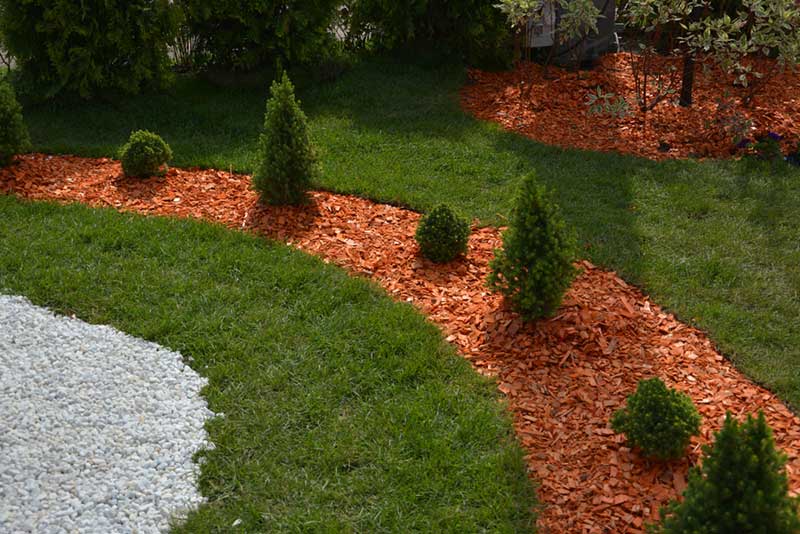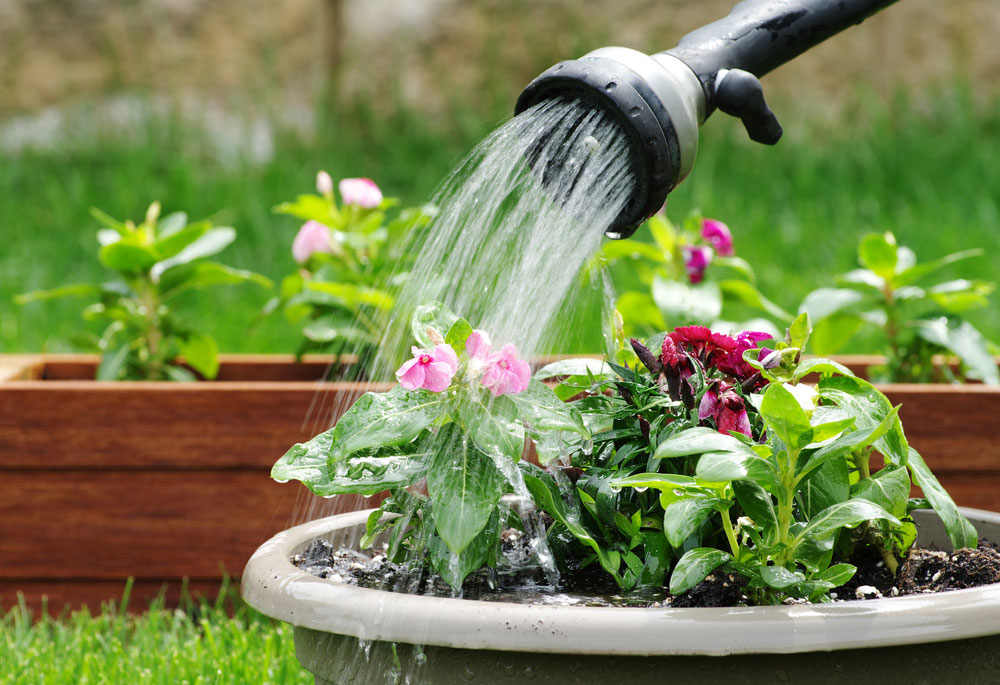Using mulch for your garden beds and around your yard offers a host of benefits for your vegetation. From protecting the soil to keeping moisture in for your plants, mulch offers many benefits to your garden.

So, how do you choose mulch for windy areas where it could blow away?
Choosing the Best Mulch for Windy Areas
When choosing the best type of mulch for windy areas, you must determine why you want it there. The two main types of mulch are:
- Organic materials
- Inorganic materials
Both types of mulch can help protect the soil, keep moisture in, and deter weeds from growing in your landscape. How well they remain in your flower beds will differ, though.
Organic Materials
Organic mulch materials include items like wood chips, straw, or bark that will eventually break down and improve the soil quality. Although these mulch materials look great, they can blow away in high-wind areas if not put in place properly.
These mulch materials will also need replenishing after they deteriorate into the soil, so their upkeep can be taxing for some homeowners.

Inorganic Materials
Many homeowners will choose inorganic materials, such as rocks, pebbles, and stones that don’t decompose into the ground. Consequently, these mulch choices are heavy and will stay put in many high-wind areas.
One drawback to inorganic materials that some homeowners find is their look. When there’s excessive rock or stone throughout the landscape, it may not seem as welcoming as a yard with greenery and organic mulch.
What To Choose
After examining both organic and inorganic mulch materials, you may already know which type you prefer. If you want a mulch that will stay in place and has virtually no maintenance and upkeep, using rocks, pebbles, or other inorganic materials are your best choice.
If you prefer organic materials around your landscape, some choices have a higher chance of staying put on windy days. There are also several things you can do to help keep the mulch from blowing away.
So, How Do You Keep Mulch In Place?
If you prefer to choose organic mulch to place around your yard, there are some methods and tricks you can use to help keep it in place, even on a windy day.
- Choose mulch large in size
- Use edging
- Install a wind barrier
- Water it down
- Use netting or screens
Large Mulch Options
Large mulch can include wood chips or ground pine bark. Both of these materials are quite heavy and are more prone to not blowing away. Avoid straw or sawdust when you live in exceptionally windy areas.

Use Edging
Line your garden beds with edging, which can help keep your mulch in place. Some homeowners will use bricks or large rocks to help break down the wind that can affect your landscape.
Plant Low-Lying Vegetation
By including low-lying shrubs or bushes in your garden beds, you can help keep the mulch in place. In addition, these plants will reduce the space between your vegetation, making it less prone to losing mulch materials to winds.
Use Wind Barriers
Try including wind barriers on one or both sides of your flower beds to cut back on the wind in that area. You can also plant climbing plants and large shrubs as a natural wind barrier to keep your mulch in place.
Water It Down
If you water your mulch during installation, you can help it settle. You can also try watering down your mulch on days that have the possibility of blowing away before you face a windstorm.
Use Netting or Screens
Some homeowners find it easier to use a mulch netting or screen to keep these materials in place during windy days. If you live in a high-wind area and prefer organic mulch, a netting or screen could be your best option.
The Takeaway on Mulch For Windy Areas
There is a wide variety of mulch products to choose from in the market. However, if you live in a windy area, your choices are slightly limited.
If you don’t want any chance of your mulch disappearing after a windy day, it’s best to choose non-organic materials like rocks and pebbles to lie in your garden beds.
If you prefer organic mulch, you have some options. From choosing large pieces to performing tasks to keep them in place, you can still enjoy your yard even with exceptional wind gusts.













